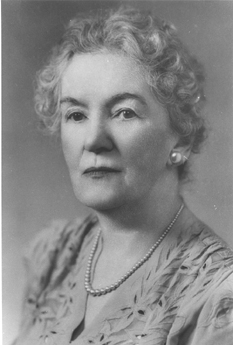

|
||
Back to Chapter 5 |
To Table of Contents |
On to the Bibliography |
If thou art a man (or woman), admire those who attempt great enterprises, even though they fail.
Seneca
I love to be in the thick of the fray. At my age (75) my grandmother never wore anything but black and her interests were social, church, and domestic with a narrow range for each. I'd rather go breathlessly than live any such life.1
Mary Elizabeth Frayser spent over fifty years, "in the thick of the fray," in South Carolina.
Frayser championed the cause of the underprivileged in the state and worked unflaggingly for them. Her interests were catholic. She labored for change in the status of women, children, African-Americans, and rural and industrial workers. She spent many years working for women's rights but she was not limited in this area as she also advocated human rights.
Mary Frayser belonged to many clubs and organizations, often holding the position of legislative or education chairman.2 These positions offered her a platform from which
Page 132 |
to launch her diverse projects. Some of the projects included education in areas of infant and child care, better nutrition for children, better living conditions in rural and mill communities, night school for mill operatives, and better relations between the races. Frayser had a rule in all her work: "if a thing is right, do it and leave the outcome to Providence."3
Frayser did what she could and accomplished much change. Many people recognized the contributions Frayser made to South Carolina. Mrs. Pinckney Estes Glantzberg, New York attorney and Chester, South Carolina native, wrote, "I wish Virginia would send a thousand people like you to South Carolina." She knew of no other person who had been so useful to her state.4 Eugene P. Link, Head of the Sociology Department, Winthrop College, wrote that he often used Frayser as an example of "good leadership in behalf of women" in his course "Women in the Modern World." He held her up as the personification of "constructive living."5 In 1946, the city of Rock Hill honored Frayser with a street named for her, Frayser Street,
Page 133 |
in the Aragon Mill area.6
Frayser continued her work well past retirement age. She left Clemson in 1947 after twenty years of service. She was 79 years old, but Frayser did not consider age an obstacle. "As I write "old age" it is difficult to realize it applies to me. I feel live to my fingertips."7
Frayser retired from active public life in the mid-1950s. However, this did not stop her interest and participation in some of her favorite organizations. She continued her support for improving interracial relations, even at the age of 92, when she renewed her membership in the Council of Human Relations.8
Mary Frayser had always looked at life as an adventure. She agreed with essayist G.K. Chesterson's advice to his small son when he asked, "Father, what is life?" "Life, my son, is wonderful. Don't you be afraid of it."9 Frayser's life had been wonderful in her estimation, she had faced and overcome
Page 134 |
many challenges, including a severe hearing impairment and frequent eye problems. Frayser faced and adequately met the challenges of life she encountered.
Page 135 |